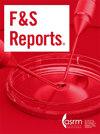Novel sonographic reference charts for early pregnancy based on known gestational age
IF 2.2
引用次数: 0
Abstract
Objective
To study pregnancy dating, we developed growth charts using data from pregnancies with known gestational age. The most widely used growth charts for ultrasonographic early pregnancy variables were developed decades ago and are based on dating by the last menstrual period. The aims of the study were to create growth charts for early pregnancy (including crown-rump length, gestational sac diameter, yolk sac diameter, and amniotic cavity diameter) for last menstrual period-dated spontaneous pregnancies and pregnancies conceived through assisted reproductive technology (ART) with known gestational age; and to compare crown-rump length measurements with two established traditional charts based on last menstrual period dating.
Design
Retrospective cohort study.
Subjects
Of 1,061 singletons, 2,803 crown-rump length measurements from 716 exactly dated ART gestations with 1,143 crown-rump length measurements from 345 spontaneous pregnancies, which were dated by the last menstrual period in women with regular cycles, were compared using nonlinear quantile regression.
Exposure
A total of 716 ART pregnancies and 345 spontaneous pregnancies underwent ultrasound examinations, with a median of four visits at various points during the first trimester.
Main Outcome Measures
Early pregnancy dating with growth charts based on crown-rump length, gestational sac-, yolk sac- and amniotic cavity diameter.
Results
Novel reference charts for ultrasound dating of gestational age based on crown-rump length from 4 + 6 to 10 + 6 gestational weeks were created. The difference of the 10th and 90th percentile was significantly higher in spontaneous compared with ART pregnancies (P<.05). For the same crown-rump length, the gestational age of spontaneous pregnancies was estimated to be up to 4.08 days older than in ART pregnancies at the 90th percentile. Preexisting curves (Robinson/Fleming, Hadlock) aligned closely with the new reference curve mid-range but showed larger deviations at the extremes of assessed gestational ages.
Conclusion
Early pregnancy crown-rump length curves based on last menstrual period may overestimate gestational age. Using 2,803 crown-rump length measurements, we propose the current comprehensive charts for early pregnancy within a population with known gestational age for crown-rump length, gestational sac diameter, yolk sac diameter, and amniotic cavity diameter.
基于已知胎龄的新型早孕期超声波参考图
目的利用已知胎龄的妊娠数据制作生长图表,研究妊娠年龄。超声早期妊娠变量最广泛使用的生长图表是几十年前开发的,基于最后一次月经的日期。本研究的目的是为已知胎龄的最后一次月经期自然妊娠和通过辅助生殖技术(ART)妊娠的早期妊娠(包括冠臀长、妊娠囊直径、卵黄囊直径和羊膜腔直径)创建生长图表;并将冠臀长度测量值与两种基于最后一次月经日期的传统图表进行比较。设计回顾性队列研究。在1061个单胎中,采用非线性分位数回归对716例ART妊娠的2803个臀冠长度测量值和345例自然妊娠的1143个臀冠长度测量值进行了比较,这些测量值以月经周期正常的妇女的最后一次月经为日期。总共有716例ART妊娠和345例自然妊娠接受了超声波检查,在妊娠早期的不同时间点平均进行了4次检查。主要结局:根据冠臀长度、妊娠囊、卵黄囊和羊膜腔直径的生长图表测量妊娠日期。结果建立了基于胎龄4 + 6 ~ 10 + 6周冠臀长超声测定胎龄的新参考图。自然妊娠与ART妊娠相比,第10和第90百分位的差异显著增加(P< 0.05)。对于相同的冠臀长度,在第90百分位数上,自然妊娠的胎龄估计比ART妊娠的胎龄大4.08天。先前存在的曲线(Robinson/Fleming, Hadlock)与新的参考曲线在中程范围内密切一致,但在评估胎龄的极端情况下显示出较大的偏差。结论基于末次月经的早期妊娠冠臀长曲线可能高估胎龄。利用2,803个冠臀长度测量值,我们提出了已知胎龄人群早期妊娠的冠臀长度、妊娠囊直径、卵黄囊直径和羊膜腔直径的当前综合图表。
本文章由计算机程序翻译,如有差异,请以英文原文为准。
求助全文
约1分钟内获得全文
求助全文

 求助内容:
求助内容: 应助结果提醒方式:
应助结果提醒方式:


